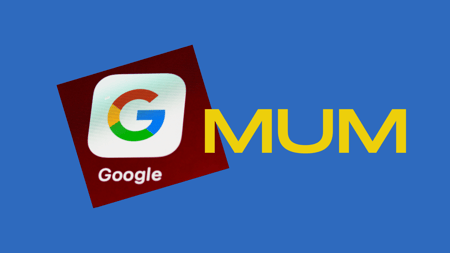In May of last year, Google announced a new update called the Multitask Unified Model, or MUM. It has become the topic of interest for most SEO specialists and businesses today, as once again, the update will be the basis of every digital marketer’s strategy moving forward.
It is said the update was designed to build on previous algorithm update and provide answers to complex queries. So what does this mean for your business? What does this mean for BERT? And how can you make the most of this transition?
We’ll discuss all of this and more below.
 What Is MUM?
What Is MUM?
The Multitask Unified Model is an AI made to analyze and produce content in the same manner that a human would. It is referred to as an advancement of the Bidirectional Encoder Representations from Transformers algorithm, more commonly referred to as BERT; the main difference between the two is that MUM is much more powerful than BERT.
The primary goal of MUM is to handle complex search engine queries. At the moment, users with complex queries often need to input at least 8 searches with additional analysis to find the full answer to their question. Google’s objective is to foresee what comprises those searches and tackle as many of those queries using a single SERP if possible.
How Is MUM Different From BERT?
BERT has helped searchers answer queries by delivering information with decent accuracy. The algorithm has been praised over previous versions due to its capabilities to determine the context of search terms and to predict missing words. BERT can even recommend keywords and search terms to help users acquire the information they’re looking for.
The MUM update was designed to handle what BERT performs but 1000x more powerful. It is able to multi-task and be multi-modal, using not only text, but video and audio data as well. While still in test mode, MUM has shown plenty of promise by ably curating data from a variety of sources in diverse languages. As demonstrated by Prabhakar Raghavan, Senior Vice President at Google, MUM was adept at showing the likenesses/differences between Mt. Adams and Mt. Fuji in a query asking ‘I’ve hiked Mt. Adams and now want to hike Mt. Fuji next fall, what should I do differently to prepare?” MUM was able to efficiently scrutinize text and images of mountain-climbing gear that might prove to be beneficial during the new trek based on information available. The demonstration displayed MUM’s multi-modal and multi-tasking capacities. MUM also has the capability to understand a more diverse set of languages compared to BERT — 75 languages, to be exact.
The Benefits Of MUM
The full power of MUM is yet to be seen, but here are some of the benefits that this AI has already demonstrated:
- Multimodal Feature
Google MUM is multimodal, which means that it’s built to understand information throughout a diverse set of formats from webpages, images, audio, and more, all at the same time.
- Handles Challenging Tasks
The algorithm can change the way that Google helps users deal with challenging tasks. It’s designed to comprehend world knowledge and the vast information available online so that it may apply it to the searcher’s queries more effectively.
- Eliminates Language Barriers
Language barriers impede our abilities to find information online. To fix this issue, Google MUM’s 75-language training aims to increase information literacy globally by providing searchers with knowledge in a variety of languages.
 What Does MUM Mean for Digital Marketing?
What Does MUM Mean for Digital Marketing?
There is no need for businesses to drastically change their SEO strategies; classic SEO is still applicable and beneficial for digital marketing. Businesses should continue the regular publication of high-quality content; first-rate, engaging content that is rich in information is still king.
However, despite this algorithm update and many to come, digital marketers still need to work on developing brand recognition and customer loyalty outside of their quality marketing content. Regardless of where the search engine acquires its data, faithful customers will still know where to get their answers for specialized queries; if people already know that a business’s competitor is a trusted expert, organic search will not do much to persuade these people to check the competing page.
Then again, there are technical details that digital marketers must tackle to guarantee that their SEO takes advantage of all MUM can offer. For example, content is not limited to just keywords anymore; marketers can also take advantage of the multimedia formats that MUM has been trained to pursue. High-quality keyphrase content in multiple formats is necessary for Google MUM to notice and recommend a business’s webpages.
Connection Model is Here to Help
To learn more about the impact of MUM on SEO today and tomorrow, work with our experts here at Connection Model. Connection Model aims to provide fruitful digital marketing strategies to get your business’s brand into the hearts and minds of your target audience. Contact us today so we can help you with MUM-compatible SEO services that will keep you one step ahead of your competition.
Written By: David Carpenter


